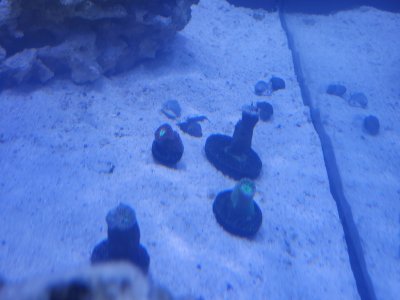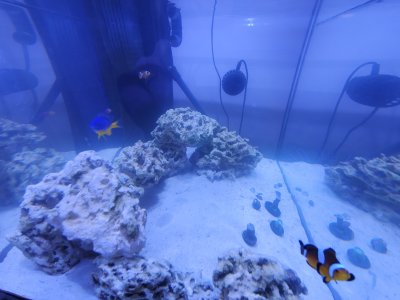Picked up some lps frags. They looked much better in the store. Now the hammer looks the worst (front right most). Duncan also looking bad (back left). Other two are grape and blasto and could be better. My tank (Elos 70) is about 1 year old. I have the kessil ap700 set to 7% intensity (most blue setting). MP40 pump set very low (two dots) to lagoon. There is a refugium with cheato and filter sock. I've since removed the filter sock because I don't see any copopods in my tank at night with a flashlight and pumps off (I do see copopods in the fishstore water) the store water salinity was 1.024. My salinity swings between 1.027 and 1.026. My temp is 73.5, alkalinity 7.7 dkh, ammonia, nitrate and nitrite all 0ppm. I did a big 50% waterchange day before putting new coral hoping to get everything where it needs to be. My tank started pretty sterile a year ago with bleached dry rock and only Caribbean live sand. For months I've had a royal gramma, 2 clownfish, damsel, and they are fine. I added cerith snails and nassirius snails and they seem ok. Not sure why my lps looks terrible. Here is last night before light went out:

This is in the morning when lights first came on:

Notice brown (dead tissue?) On front right frag. Is there anything I can or should be doing?
I spent about 6 hours acclimating the coral replacing 5ml of water in their container with my tank water every 30 minutes until salinity matched. Then I kept them in their store containers overnight to monitor for any hitchhikers. And put them in the following day.
This is in the morning when lights first came on:
Notice brown (dead tissue?) On front right frag. Is there anything I can or should be doing?
I spent about 6 hours acclimating the coral replacing 5ml of water in their container with my tank water every 30 minutes until salinity matched. Then I kept them in their store containers overnight to monitor for any hitchhikers. And put them in the following day.
Last edited:


